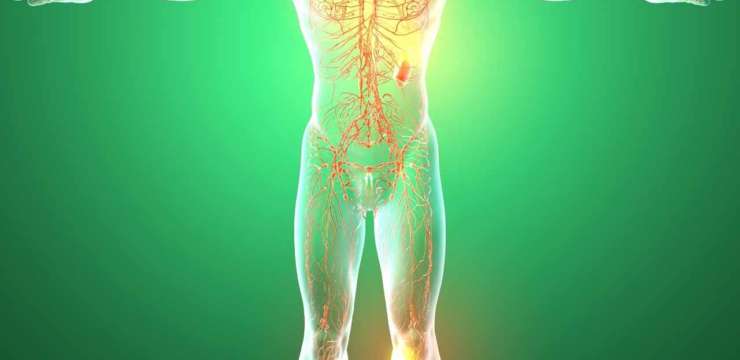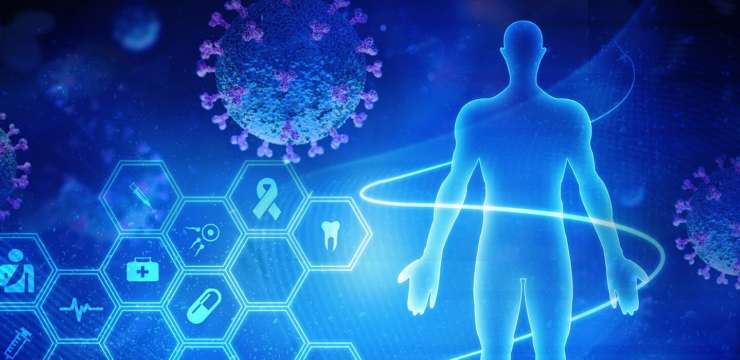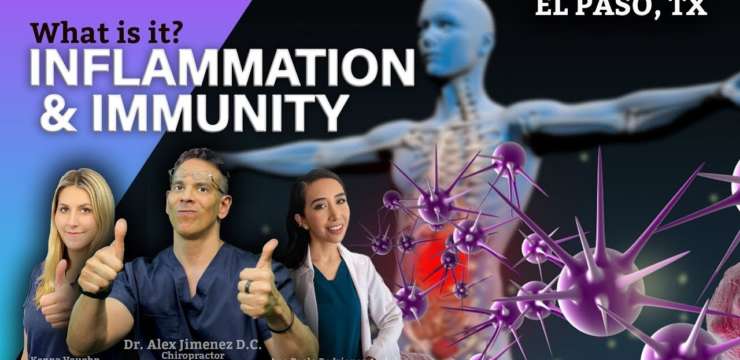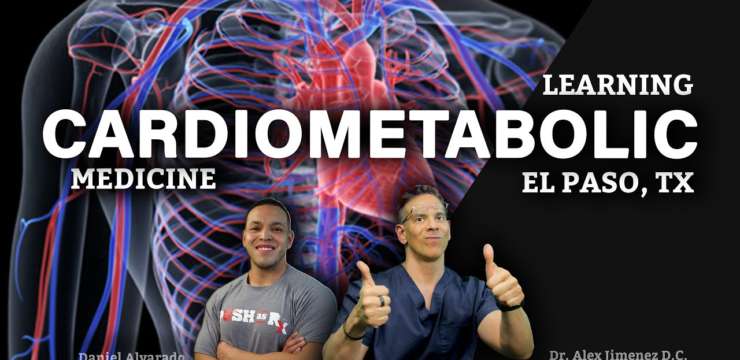Welcome to the newest edition of our Functional Medicine podcasts brought to you by Dr. Alex Jimenez. In this episode an expert will be discussing…

Wellness:Â A key factor to spine or back pain conditions is staying healthy. Overall wellness involves a balanced diet, appropriate exercise, physical activity, restful sleep and a healthy lifestyle. The term has been applied in many ways. But overall the definition is as follows. It is a conscious, self-directed and evolving process of achieving full potential. It is multidimensional, bringing together lifestyle both mental/spiritual and the environment in which one lives. There are six dimensions that all go into wellness. Working on all six dimensions helps an individual to become truly well. It is positive and affirms that which we do is in fact correct. It is an active process where people become aware and make choices towards a more successful lifestyle. This includes how a person contributes to their environment/community. They aim to build healthier living spaces and social networks. It helps in creating a person’s belief systems, values, and a positive world perspective. Along with this comes the benefits of regular exercise, healthy diet, as well as personal self-care and knowing when to seek medical attention. Dr. Jimenez’ message is to work towards being fit, being healthy, and staying aware with our collection of articles, blogs and videos. Health coaching incorporates all six dimensions and works with individuals on how they can achieve optimal wellness in these areas.

Welcome to the newest edition of our Functional Medicine podcasts brought to you by Dr. Alex Jimenez. In this episode an expert will be discussing…


Tissues
The human body is composed of many tissues. Each organ in the body can be broken down into tissues. Tissues are sorted based on their basic functions. These include:
Epithelial Tissue
Connective TissueÂ
Muscle Tissue
Nerves Tissue
Muscle Tissue
Out of these tissue types, the only tissue that contracts is muscle. Muscle tissue is further broken down into skeletal, cardiac, and smooth. These tissues are contracted when stimulated.Â
Connective Tissue
Connective tissue has three types as well. Connective tissue proper, fluid connective tissue, and supporting connective tissue. However, all three of these connective tissue types are made up of the same components. They all include specialized cells, protein fibers, and ground substances.Â
The differences between these tissues can be seen in what subdivides them. For example, the fluid connective tissue is subdivided into blood and lymph, whereas supporting connective tissue can be divided into cartilage and bone. Lastly, connective tissue proper is divided into loose connective tissue and dense connective tissue.Â
The substance that connective tissue is composed of is a clear fluid. This fluid has a similar consistency to maple syrup but is clear and odorless. Its primary function is to fill the spaces between the cells and surround all fibers.Â
Loose and Dense Connective TissueÂ
The loose connective tissue binds many structures together. Loose connective tissue allows mobility. Dense connective tissue forms collagen that is strong and flexible. These fibers form branching frameworks for the rest of the body. With the fibers being parallel to each other and very tightly packed, there are forces applied to the issue. Dense connective tissue is responsible for forming tendons, ligaments, capsules of organs, and fascia.Â
Fascia
Fascia varies as its function is primarily based on location. Fascia forms individual muscle fibers and the portions between muscles. These sheets can be thin or thick. Fascia is flexible and can stretch. Fascia lies under the skin, and deep fascia lies overs the muscles. Therefore, it is important that we move fascia frequently. Over time, if we are not stretching, the fascia will become tighter and tighter and eventually restrict movement. Fascia is in every cell, tissue, and organ.Â
When fascia is functioning properly, it has a positive impact on the autonomic and central nervous systems. However, when it is impacted by poor posture, inflammation, or trauma, the fascia can become distorted and apply abnormal pressure to areas of the body.Â
Phase AngleÂ
When focusing on the orthomolecular science of the body, we see how important tissue is. Fascia surrounds every cell, which can help determine cellular health. The phase angle is a snapshot at cellular health where we are able to see how healthy and strong an individual’s cells are. We want patients’ phase angles to be as close to a seven as possible. With a low phase angle (closer to 3 and 4), we see weakness in the cell. Below is a video that helps describes phase angle in more detail:Â
[embedyt] www.youtube.com/watch?v=WwbIsPNUYqs%5B/embedyt%5D
IT IS IMPORTANT TO HAVE HEALTHY CELLS AND HEALTHY TISSUE. WITH THE USE OF THE INBODY 770, WE ARE ABLE TO ASSESS PATIENTS’ MUSCLE MASS, BODY FAT MASS, AND PHASE ANGLE. THE INBODY IS NOT JUST FOR PATIENTS WHO ARE WORRIED ABOUT MUSCLE MASS BUT FOR EACH INDIVIDUAL WE SEE. IT PROVIDES IMPORTANT MARKERS EVERYONE SHOULD BE AWARE OF. -KENNA VAUGHN, ACSM-EP, SENIOR HEALTH COACH
References:Â
Grisanti, Ron, and Brad Hayes, DC  FDMT580G Myofascial Disruption Technique. Functional Medicine University, www.functionalmedicineuniversity.com/members/598.cfm. Â
Additional Online Links & Resources (Available 24/7)Â Â
Â
Online Appointments or Consultations:  https://bit.ly/Book-Online-Appointment Â
Â
Online Physical Injury / Accident Intake Form: https://bit.ly/Fill-Out-Your-Online-History Â
Â
Online Functional Medicine Assessment:Â https://bit.ly/functionmed


Stress can be defined as any external or internal challenge that disrupts homeostasis in an individual. How stressed an individual feels varies depending on their coping skills and mechanisms. For most, stress is anything that causes a flight or flight response. There are several emotions that cause individuals to feel this flight or fight response. A few possibilities are:
Bitterness
Resentment
Retaliation
Anger
Trauma
Betrayal
Rage
DepressionÂ
GossipÂ
Self-hate
Being rejectedÂ
LonelinessÂ
ShameÂ
A stressor produces different mixes of the nervous system and hormonal responses. One stressor may lead to the nervous system activation releasing catecholamines, but small amounts of adrenaline and cortisol. However, another stressor may result in the opposite reaction. In studies performed, it is stated that there are direct relationships between behavior, the brain, and immunity. One association that is well studied is the relationship between autoimmune diseases and self-hatred. By attacking ourselves with our own harsh words and negative thoughts, we see a direct relationship corresponding to an autoimmune response, ultimately ending in autoimmune disease. The study can be viewed below:
Dangers of Excessive CortisolÂ
Cortisol is released in times of stress. It is necessary, but when too much cortisol is released for too long, the body sees side effects. The adrenal glands are consistently producing cortisol. Cortisol stimulates the conversion of noradrenaline to adrenaline. This creates an increased amount of adrenaline in the blood. Cortisol also blocks the conversion of the T4 thyroid hormone. Due to this, individuals under stress may develop systems of hypothyroidism. Additionally, cortisol suppresses the production of T-cell activity. This increases the risk of infection.Â
Another study states that animals genetically susceptible to insulin-dependent diabetes (Type 1 Diabetes) developed the disease more frequently when they were subjected to stress. While under stress, the elevated cortisol levels in the bloodstream block insulin, making it difficult to control blood glucose. Â
Phase AngleÂ
Stress plays an essential factor in phase angle as it disrupts homeostasis. The phase angle is a snapshot at cellular health that provides practitioners with the integrity of your cellular membranes. The healthier an individual is, the higher their phase angle, making it harder for inflammation and infection to infiltrate. The more stress an individual is under, the higher their cortisol is. This increases their blood glucose level and can result in a higher body fat percentage. These combined decrease cellular health and cause a permeable cellular membrane. We evaluate and monitor our patient’s phase angle by using an InBody 770 machine. The anthropometric measurements show us where inflammation is and other significant numbers such as visceral fat, basal metabolic rate, and segmental water analysis.Â
[embedyt] www.youtube.com/watch?v=WwbIsPNUYqs%5B/embedyt%5D
Diagnostic TestingÂ
Although we utilize many different diagnostic lab companies, we use the Adrenal Hormone Report from Doctors Data to measure cortisol levels. A sample report is shown below:Â
Â
Â
CORTISOL IS NECESSARY, AND STRESS IS A NATURAL RESPONSE TO PROTECT THE BODY. HOWEVER, WHEN WE SEE THE “STRESS RESPONSE” ON FOR TOO LONG, WE KNOW OTHER ISSUES ARE GOING ON. IT IS CRUCIAL TO REMEMBER TO RELAX, TAKE TIME TO FOCUS ON DEEP BREATHING, MEDITATION OR YOGA, AND UNWIND. -KENNA VAUGHN, ACSM-CEP, SENIOR HEALTH COACHÂ
References:Â
Maier SF, Watkins LR, Fleshner M. Psychoneuroimmunology. The interface between behavior, brain, and immunity. Am Psychol. 1994 Dec;49(12):1004-17. doi: 10.1037//0003-066x.49.12.1004. PMID: 7818221.Â
Dr Ron Grisanti,D.C “Insiders Guide.†Functional Medicine University (FMU).
Additional Online Links & Resources (Available 24/7)


Â
Online Appointments or Consultations:  https://bit.ly/Book-Online-Appointment


Â
Online Physical Injury / Accident Intake Form: bit.ly/Fill-Out-Your-Online-History


Â
Online Functional Medicine Assessment: bit.ly/functionmed
Â
Â
Â
Disclaimer
Â
The information herein is not intended to replace a one-on-one relationship with a qualified health care professional, licensed physician, and is not medical advice. We encourage you to make your own health care decisions based on your research and partnership with a qualified health care professional. Our information scope is limited to chiropractic, musculoskeletal, physical medicines, wellness, sensitive health issues, functional medicine articles, topics, and discussions. We provide and present clinical collaboration with specialists from a wide array of disciplines. Each specialist is governed by their professional scope of practice and their jurisdiction of licensure. We use functional health & wellness protocols to treat and support care for the musculoskeletal system’s injuries or disorders. Our videos, posts, topics, subjects, and insights cover clinical matters, issues, and topics that relate and support, directly or indirectly, our clinical scope of practice.* Our office has made a reasonable attempt to provide supportive citations and has identified the relevant research study or studies supporting our posts. We provide copies of supporting research studies available to regulatory boards and the public upon request. We understand that we cover matters that require an additional explanation of how it may assist in a particular care plan or treatment protocol; therefore, to further discuss the subject matter above, please feel free to ask Dr. Alex Jimenez or contact us at 915-850-0900.  Read More…
Dr. Alex Jimenez DC, MSACP, CCST, IFMCP*, CIFM*, CTG*
email: coach@elpasofunctionalmedicine.com
phone: 915-850-0900
Licensed in Texas & New Mexico


Iodine is a substance that can be found in salt and food. Due to contrary belief, iodine deficiency is very much alive, and over 96% of people are deficient. Hypothyroidism is very common, and the highest concentration of iodine is in the thyroid. Simply put, you can not make thyroid hormone without iodine. However, by treating the thyroid with iodine, the cysts also improve. It is essential to acknowledge that thyroid cancer is one of the fastest growing cancers.
Iodine
Iodine has many functions, but one of the most prevalent is to maintain the typical architecture of glandular tissue. These tissues include the thyroid gland, ovaries, uterus, breasts, prostate, and pancreas. Cysts are the first thing to appear on these tissues when iodine deficiency is present. Iodine used to be very present in food; however the National Health and Nutrition Examination Survey that is done by the United States every ten years that measures the vitamin, mineral, and toxicity level has shown that iodine levels declined over 50%. Throughout this time, when iodine levels are low, we have seen an increase in thyroid illness, hypothyroidism, and Hashimotos.
Thyroid
The thyroid gland is located in the neck. It is part of the endocrine system and is a butterfly-shaped gland that is responsible for hormone release. These hormones are associated with metabolism and the way the human body uses energy. The hormone released is Thyroxine (T4) and consists of four atoms of iodine. The other hormone released is triiodothyronine (T3) which contains three atoms of iodine. These hormones become biologically active and influence the cells and tissues throughout the body.
Common problems associated with T3 and T4 include too much or too little production. Too much is referred to as hyperthyroidism. Hyperthyroidism symptoms include weight loss, heat intolerance, anxiety, and sore or gritty eyes. Too little is known as hypothyroidism. Those impacted by hypothyroidism suffer from tiredness, feeling cold, weight gain, poor concentration, and depression. Hypothyroidism is a more common disorder.
Phase Angle
Phase angle is an overall snapshot of cellular health. The higher the phase angle, the more robust an individual’s cellular membrane is, indicating they are able to fight off inflammation and infection better. Those with a poor phase angle tend to have overall poor health and are more susceptible to inflammation, metabolic syndrome, and infections.
Phase angle can be impacted by thyroid disorders if the hormones are not balanced. For example, hypothyroidism causes weight gain, depression, and tiredness. These three combined can lower phase angle. The more weight an individual carries, the more cortisol and fat cells they create. These cells breed inflammation, reducing phase angle. Depression and tiredness make it extremely hard for individuals to exercise and want to live a healthy lifestyle. The reduction of exercise and increase in unhealthy food causes more weight gain, inflammation and can lead to joint pain if left untreated.
We monitor phase angle and inflammation with the InBody 770. This machine uses bioelectric signals to create a report showing an individual’s body composition. The report shows crucial numbers such as intracellular water, extracellular water, percent body fat, lean muscle mass, and more.
[embedyt] www.youtube.com/watch?v=WwbIsPNUYqs%5B/embedyt%5D
THE HUMAN BODY IS AN EXTREMELY DELICATE SYSTEM THAT CAN BE THROWN OFF WITH THE SMALLEST CHANGE. IODINE DEFICIENCIES ARE PREVALENT, AS WELL AS THYROID PROBLEMS. DIETARY CHANGES, EXERCISE, AND POSSIBLE SUPPLEMENTATION (AFTER SPEAKING WITH YOUR HEALTHCARE PROVIDER) COULD HELP INDIVIDUALS WHO SUFFER FROM LOW PHASE ANGLE AND THYROID ISSUES. -KENNA VAUGHN, ACSM-CEP, SENIOR HEALTH COACH
References:Â
Brownstein, David. “Iodine: The Most Misunderstood Nutrient.†Functional Medicine University. 18 May 2021.Â
Triggiani V, Tafaro E, Giagulli VA, Sabbà C, Resta F, Licchelli B, Guastamacchia E. Role of iodine, selenium and other micronutrients in thyroid function and disorders. Endocr Metab Immune Disord Drug Targets. 2009 Sep;9(3):277-94. doi: 10.2174/187153009789044392. Epub 2009 Sep 1. PMID: 19594417
Additional Online Links & Resources (Available 24/7)


Â
Online Appointments or Consultations:  https://bit.ly/Book-Online-Appointment


Â
Online Physical Injury / Accident Intake Form: bit.ly/Fill-Out-Your-Online-History


Â
Online Functional Medicine Assessment: bit.ly/functionmed
Disclaimer
Â
The information herein is not intended to replace a one-on-one relationship with a qualified health care professional, licensed physician, and is not medical advice. We encourage you to make your own health care decisions based on your research and partnership with a qualified health care professional. Our information scope is limited to chiropractic, musculoskeletal, physical medicines, wellness, sensitive health issues, functional medicine articles, topics, and discussions. We provide and present clinical collaboration with specialists from a wide array of disciplines. Each specialist is governed by their professional scope of practice and their jurisdiction of licensure. We use functional health & wellness protocols to treat and support care for the musculoskeletal system’s injuries or disorders. Our videos, posts, topics, subjects, and insights cover clinical matters, issues, and topics that relate and support, directly or indirectly, our clinical scope of practice.* Our office has made a reasonable attempt to provide supportive citations and has identified the relevant research study or studies supporting our posts. We provide copies of supporting research studies available to regulatory boards and the public upon request. We understand that we cover matters that require an additional explanation of how it may assist in a particular care plan or treatment protocol; therefore, to further discuss the subject matter above, please feel free to ask Dr. Alex Jimenez or contact us at 915-850-0900.  Read More…
Dr. Alex Jimenez DC, MSACP, CCST, IFMCP*, CIFM*, CTG*
email: coach@elpasofunctionalmedicine.com
phone: 915-850-0900
Licensed in Texas & New Mexico




The endocrine system is very delicate and precise in the human body. The endocrine system is responsible for helping to control mood, growth, development, metabolism, how our organs work, and reproduction. The critical factor of the endocrine system is regulating how much of each hormone is released. This depends on how much of the hormone is already in the bloodstream and other substances like calcium.Â
Cortisol
One of the main hormones the endocrine system is responsible for is cortisol. Cortisol is the primary stress hormone and also increases blood sugars, enhances the brain’s use of glucose, and increases the substances that repair tissue. Additionally, cortisol is the primary hormone in control of our flight-or-fight response. However, the circadian rhythm of cortisol should always be considered. Cortisol is one of the hormones that is released in cardigan rhythm. Cortisol is usually highest first thing in the morning, drops, and will plateau for most of the day until evening time before bed, where it will drop again. Performing lab work to assess cortisol levels is beneficial as cortisol is responsible for many daily functions. Cortisol is produced by the Zona fasciculata of the adrenal cortex and is regulated by several factors. It is influenced by sleep patterns, light/dark exposure, and mealtimes. Cortisol also helps with widespread tissue damage like inflammation, illness, or an infection as well as plays a role in mental and emotional stress. To test our patient’s cortisol levels and patterns, we use a test from DUTCH. This test is called DUTCH Plus, and a sample report is shown below. This test allows us to track a patient’s rhythm for 24 hours as well as other hormones.Â
Â
StressÂ
As previously stated, cortisol is the main hormone for controlling stress. While stress is necessary for the human body to function, chronic stress puts your health at risk. The body’s stress response system is normally self-limiting, and once the threat is gone, the stress levels reduce, and the body syncs back into a level of homeostasis. However, when chronic stress is around, cortisol remains on and pumps into the system at a high rate. This long-term activation of stress overexposes the body to cortisol and other stress hormones that lead to problems such as:Â
AnxietyÂ
Depression
Digestive problems
Headaches
Heart disease
Sleep problems
Weight gain
Memory and concentration impairmentÂ
Phase Angle
The phase angle is how health care professionals can monitor the integrity of cellular membranes. If the phase angle begins to decline, it has been linked directly to a decline in overall health. Similar to if phase angle increases, overall health is increasing. The integrity of cellular membranes is essential as cell survival depends on solid membranes. When the cellular wall is weak, it can collapse. From here, it is difficult for the body to take up the proper nutrients it needs. Additionally, with a weak cellular membrane, the cell is left with little to no protection from outside invaders. Stress impacts phase angle by causing individuals to gain weight and decreasing overall health.
We monitor a patient’s phase angle with the use of the InBody 770. This advanced machine allows us to not only track the phase angle of our patients but many other areas of their health as well, including but not limited to intracellular and extracellular water.Â
[embedyt] www.youtube.com/watch?v=WwbIsPNUYqs%5B/embedyt%5D
STRESS CAN BE MORE DEBILITATING THAN INDIVIDUALS REALIZE. A GREAT WAY TO COMBAT STRESS AND HELP PROTECT YOUR PHASE ANGLE IS TO PRACTICE GOOD SLEEP HYGIENE, EAT PROPER NUTRIENTS, REGULAR EXERCISE, AND MEDITATION. -KENNA VAUGHN, ACSM-EP SENIOR HEALTH COACH
References:Â
Keller A, Litzelman K, Wisk LE, Maddox T, Cheng ER, Creswell PD, Witt WP. Does the perception that stress affects health matter? The association with health and mortality. Health Psychol. 2012 Sep;31(5):677-84. doi: 10.1037/a0026743. Epub 2011 Dec 26. PMID: 22201278; PMCID: PMC3374921.Â
Mayo Clinic Staff. “Stress Management Resources.†Mayo Clinic, Mayo Foundation for Medical Education and Research, 26 Feb. 2021, www.mayoclinic.org/healthy-lifestyle/stress-management/resources/hlv-20049495.  Â
Additional Online Links & Resources (Available 24/7)


Â
Online Appointments or Consultations:  https://bit.ly/Book-Online-Appointment


Â
Online Physical Injury / Accident Intake Form: bit.ly/Fill-Out-Your-Online-History


Â
Online Functional Medicine Assessment: bit.ly/functionmed
Â
Â
Â
Disclaimer
Â
The information herein is not intended to replace a one-on-one relationship with a qualified health care professional, licensed physician, and is not medical advice. We encourage you to make your own health care decisions based on your research and partnership with a qualified health care professional. Our information scope is limited to chiropractic, musculoskeletal, physical medicines, wellness, sensitive health issues, functional medicine articles, topics, and discussions. We provide and present clinical collaboration with specialists from a wide array of disciplines. Each specialist is governed by their professional scope of practice and their jurisdiction of licensure. We use functional health & wellness protocols to treat and support care for the musculoskeletal system’s injuries or disorders. Our videos, posts, topics, subjects, and insights cover clinical matters, issues, and topics that relate and support, directly or indirectly, our clinical scope of practice.* Our office has made a reasonable attempt to provide supportive citations and has identified the relevant research study or studies supporting our posts. We provide copies of supporting research studies available to regulatory boards and the public upon request. We understand that we cover matters that require an additional explanation of how it may assist in a particular care plan or treatment protocol; therefore, to further discuss the subject matter above, please feel free to ask Dr. Alex Jimenez or contact us at 915-850-0900.  Read More…
Dr. Alex Jimenez DC, MSACP, CCST, IFMCP*, CIFM*, CTG*
email: coach@elpasofunctionalmedicine.com
phone: 915-850-0900
Licensed in Texas & New Mexico


Welcome to our podcast, in this edition we resume with our topic of melatonin featuring Dr. Alex Jimenez and Nutritionist Ana Paola RodrÃguez Arciniega discussing…


Phase Angle is a helpful tool for health practitioners to identify the cell membrane’s integrity and dysfunction. In recent years, studies show an increase in patients with Metabolic Syndrome. Aside from the other health issues that metabolic syndrome induces, it increases oxidative stress and inflammation throughout the body. Oxidative stress promotes cellular damage.Â
Metabolic Syndrome
Metabolic Syndrome is a condition in which multiple health conditions occur together. Metabolic Syndrome increases an individual’s risk for heart disease, stroke, and type 2 diabetes. The conditions that make up metabolic syndrome include:Â
Increased blood pressure (>130/85mmHg)
High fasting blood glucose (>110mg/dL)
Excess body weight (men >40in, women >35in)
Low HDL (men <40mg/dL, women <50mg/dL)
Hypertriglyceridemia (>150mg/dL)Â
Although many individuals experience all of the conditions listed above, you only need to have three out of the five in order to be diagnosed with metabolic syndrome. Metabolic syndrome is often correlated with age, inflammation, obesity, and diabetes. The risk of developing metabolic syndrome increases the older you get and your rate of physical activity. If you become less active, your risk of developing metabolic syndrome will rise.Â
[embedyt] www.youtube.com/watch?v=deH1uzXA1ik%5B/embedyt%5DÂ
Phase AngleÂ
Phase angle is how health care professionals can monitor the integrity of cellular membranes. If the phase angle begins to decline, it has been linked directly to a decline in overall health. Similar to if phase angle increases, overall health is increasing. The integrity of cellular membranes is essential as cell survival depends on solid membranes. When the cellular wall is weak, it can collapse. From here, it is difficult for the body to take up the proper nutrients it needs. Additionally, with a weak cellular membrane, the cell is left with little to no protection from outside invaders.Â
We monitor a patient’s phase angle with the use of the InBody 770. This advanced machine allows us to not only track the phase angle of our patients but many other areas of their health as well, including but not limited to intracellular and extracellular water.Â
[embedyt] www.youtube.com/watch?v=WwbIsPNUYqs%5B/embedyt%5DÂ
Increasing Phase Angle & Decreasing Metabolic Syndrome
There are simple steps individuals can take every day to begin to improve their phase angle as well as decrease their risk of developing metabolic syndrome. These lifestyle changes include:Â
Exercising for a minimum of 30 minutes a day (as simple as walking)Â
Adding in a vegetable and fruit to every meal or snackÂ
Getting adequate protein and whole grains
Limiting saturated fat and salt intakeÂ
Not smokingÂ
Maintaining a healthy weightÂ
Adequate sleep for proper cellular healingÂ
IN THE RECENT YEAR, THERE HAVE BEEN MORE PATIENTS WHO ARE DIAGNOSED WITH METABOLIC SYNDROME. WHEN CAUGHT EARLY, THERE ARE MULTIPLE WAYS TO COMBAT THIS DIAGNOSIS HOLISTICALLY AND NATURALLY. WITH THE ABILITY TO CREATE PERSONALIZED TREATMENT PLANS INVOLVING EXERCISE, DIET, AND NATURAL SUPPLEMENTS, WE SEE AN INCREASE IN PATIENT’S OVERALL PHASE ANGLE. -KENNA VAUGHN, ACSM-EP, SENIOR HEALTH COACH
References:Â
de Luis DA, Aller R, Romero E, Dueñas A, Perez Castrillon JL. Relation of phase angle tertiles with blood adipocytokines levels, insulin resistance and cardiovascular risk factors in obese women patients. Eur Rev Med Pharmacol Sci. 2010 Jun;14(6):521-6. PMID: 20712259.Â
Huang PL. A comprehensive definition for metabolic syndrome. Dis Model Mech. 2009 May-Jun;2(5-6):231-7. doi: 10.1242/dmm.001180. PMID: 19407331; PMCID: PMC2675814. Â
Additional Online Links & Resources (Available 24/7)


Â
Online Appointments or Consultations:  https://bit.ly/Book-Online-Appointment


Â
Online Physical Injury / Accident Intake Form: bit.ly/Fill-Out-Your-Online-History


Â
Online Functional Medicine Assessment: bit.ly/functionmed
Â
Disclaimer
Â
The information herein is not intended to replace a one-on-one relationship with a qualified health care professional, licensed physician, and is not medical advice. We encourage you to make your own health care decisions based on your research and partnership with a qualified health care professional. Our information scope is limited to chiropractic, musculoskeletal, physical medicines, wellness, sensitive health issues, functional medicine articles, topics, and discussions. We provide and present clinical collaboration with specialists from a wide array of disciplines. Each specialist is governed by their professional scope of practice and their jurisdiction of licensure. We use functional health & wellness protocols to treat and support care for the musculoskeletal system’s injuries or disorders. Our videos, posts, topics, subjects, and insights cover clinical matters, issues, and topics that relate and support, directly or indirectly, our clinical scope of practice.* Our office has made a reasonable attempt to provide supportive citations and has identified the relevant research study or studies supporting our posts. We provide copies of supporting research studies available to regulatory boards and the public upon request. We understand that we cover matters that require an additional explanation of how it may assist in a particular care plan or treatment protocol; therefore, to further discuss the subject matter above, please feel free to ask Dr. Alex Jimenez or contact us at 915-850-0900.  Read More…
Dr. Alex Jimenez DC, MSACP, CCST, IFMCP*, CIFM*, CTG*
email: coach@elpasofunctionalmedicine.com
phone: 915-850-0900
Licensed in Texas & New Mexico


Today Dr. Alex Jimenez, Clinical Nutritionist Ana Paola Rodriguez Arciniega, and Senior Health Coach Kenna Lee Vaughn discuss the function of Chronobiotic molecule, Melatonin. Discussion:…


As part of our personalized medicine approach in our offices, we take our remote patient monitoring and virtual health software beyond the technology to provide…


Inflammation Fighting Smoothie
Dark leafy greens as well as certain fruits are a great way to help the body naturally fight off inflammation. We’ve put together a simple smoothie that can be consumed every morning to fuel your body and help reduce inflammation.
¾ cup orange juice
½ cup ice
½ spinach
1 cup strawberries, sliced
½ cup blueberries
2 tbsp flax seed
Additionally, it is great to add powder pre and probiotics to smoothies. This ensures we are feeding the microbiome the healthy bacteria it needs to flourish.
For additional protein, add in 1 scoop protein powder or 5oz of greek yogurt


Metals in the body are essential for proper cellular function. That being said, in order to ensure the metals you are ingesting are good for you and what the body needs, you need to know whole sources to obtain them from and what each metal does. On the other hand, there are toxic metals as well. Toxic metals are an issue that can mimic many other serious health conditions. We are able to assess metal levels in the body and create a treatment plan that safely detoxes individuals from these toxic metals.Â
Healthy Metals
CalciumÂ
There are different types of calcium. Dietary calcium and Erythrocyte calcium. In the human body, there are around 179 biological functions of calcium. Each and every cell in the body needs ionic calcium. This is what you find in teeth and bones as well as what we need to move our muscles. Additionally, it is needed for the rhythmic action of the heart and intestines. However, Erythrocyte calcium is associated with heart disease and stroke. Studies show that erythrocyte calcium is elevated in hypertension patients.Â
ChromiumÂ
Chromium accumulates in the spleen and in heart tissue. On top of this, there have been many studies done that show chromium impacts sugar metabolism through its role in uptaking insulin.Â
CopperÂ
Copper is very important as it is a co-factor in lipid metabolism, detoxification in the liver, and neurological control. In the body, copper is found in the liver, brain, hair, and other tissues. To get whole sources of copper in the diet, it is best to eat nuts, seeds, whole grains, beans, and shellfish. Copper binds to superoxide dismutase and protects our cells from oxidative damage. If there is not enough copper obtained through the diet we begin to see the reduced function of enzymes.Â
MagnesiumÂ
Magnesium is a cofactor to about 300 enzyme systems in the body. If an individual does not have proper magnesium levels, we see hypertension and diabetes. Studies done have also shown magnesium to be used in heart failure treatment. The symptoms we most often see in patients who have magnesium deficiencies are neuromuscular tremors, fasciculations, and muscle spasms. The relationship between magnesium and the nervous tissue is close. Due to this, one of the earliest ways to catch a magnesium deficiency is if the patient has nausea, loss of appetite, hair loss, and tremors. For whole magnesium sources, including nuts, beans, and dark green leafy vegetables into the diet.Â
ManganeseÂ
Manganese is involved with a number of enzymes that control metabolism, connective tissue maintenance, and the Krebs cycle. If deficient, we see glucose intolerance. Some of the best foods to keep manganese at a healthy level in the body are fruits, whole grains, leafy green vegetables, pecans, peanuts, pineapples, avocado, and hazelnuts.Â
PotassiumÂ
The nervous and muscle system strongly rely on potassium. Without proper potassium levels, the body will suffer from hypertension, heart arrhythmias, and muscle weakness. To increase potassium levels in the body, vegetable juice, citrus juice, and bananas will help.Â
SeleniumÂ
One of the main reasons we need selenium is to activate glutathione peroxidase. Mainly, we need this to activate the enzymes that protect our cells from oxidative damage.Â
VanadiumÂ
This metal is in the liver and bone. It is shown that this lowers cholesterol synthesis and may also lower triglycerides. A great way to include this metal in your diet is by eating parsley, black pepper, dill, and mushrooms.Â
Zinc
Zinc is incredibly important as it activates the cofactors for DNA/RNA polymerase. Additionally, it helps with healing cuts and skin disorders. Zinc is essential for normal immune function as well.Â
Toxic Metals
AluminumÂ
Aluminum can cause impaired memory, convulsions, and characteristics of EEG changes. Aluminum is found in many items consumers use daily. These products include antiperspirants, soda cans, baking soda, and toothpaste. There are many aluminum-free deodorants on the market that patients can switch to.Â
Arsenic
 Arsenic has been linked to vascular disease and certain cancers that appear in the skin, bladder, and lungs. Unfortunately, arsenic is found in contaminated water supplies, paint, wood preservatives like outdoor decks, and playground equipment.Â
CadmiumÂ
This metal competes with zinc down at the cellular level and impacts binding sites. This negatively affects the body as it causes a loss in enzyme activity. If an individual is exposed to cadmium for long-term exposure, we see damage to the kidneys. Common symptoms patients complain of are hypertension, femoral pain, and osteopenia. Individuals can be exposed if they are around engine exhaust emissions, canned evaporated milk, cigarette smoke, and paint pigments. A great way to combat exposure is to increase dietary fiber and eat items like beans, cooked vegetables, oatmeal.Â
LeadÂ
If an individual has lead toxicity they experience pain in extremities due to axonal degeneration. Lead affects the inhibiting factor on enzymes in the biosynthesis pathway. Patients also report having kidney damage and nausea. Additionally, lead toxicity commonly affects sensory, visual, and auditory functions. This is due to the fact that it negatively impacts the nervous system. One thing patients can do is increase dietary calcium to help lower the amount of lead absorbed through the intestines. Lead can be found in newsprint, tea, art supplies, bullets, soils, balance weights, and drinking water from lead plumbing.Â
MercuryÂ
Mercury has a tendency to form very stable bonds with amino acids. This makes it hard to detox from the body. One of the most important protective agents is dietary selenium. If someone has high mercury levels we typically see them have emotional disturbance and a lack of mental concentration.Â
As one can see, there are many metals that benefit the human body and are essential for proper cellular function. However, we can also see that there are metals that can cause many problems. We are able to offer toxic metal testing to see the levels of these metals in your system. From here, we can provide a one-on-one plan to help your body safely detox.Â


Discussions: As part of our personalized medicine approach in our offices, we take our remote patient monitoring and virtual health software beyond the technology to…


We are excited you are taking positive steps to learn about health challenges affecting you and your family. There is the power in making educated…


Dr. Russell M. Jaffe, CEO and Chairman of PERQUE began planting the seeds of his vision when he first started working at the National Institutes…


Welcome to our newest Functional Medicine Episode. In this edition, Dr. Alex Jimenez and LPT Exercise Physiologist Daniel Alvarado will help us understand more about…